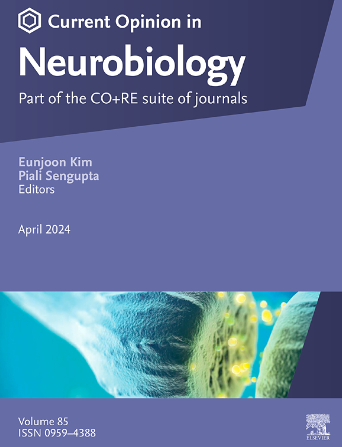CAMK2;四种基因,一种综合症?描述基因型-表型相关性。
IF 4.8
2区 医学
Q1 NEUROSCIENCES
引用次数: 0
摘要
神经发育障碍是一组影响认知、适应性、运动和言语语言发展的异质脑障碍。随着诊断技术的进步,越来越多的致病基因被发现,包括突触基因。钙钙调素依赖性蛋白激酶2型(CAMK2)家族是突触中最丰富的激酶家族,最近已被确定可引起NDD,越来越多不相关的NDD个体携带四个CAMK2基因之一的致病性变异。然而,关于每个CAMK2平行体和每个变异类型的具体表型表现,包括这些基因的变异如何影响CAMK2蛋白和突触功能,并导致神经发育障碍的机制,还有很多需要了解的。这篇综述概述了迄今为止发表的所有CAMK2病例,并揭示了基因型-表型相关性,可以作为解释CAMK2相关症状的起点,为未来的研究提供方向。本文章由计算机程序翻译,如有差异,请以英文原文为准。
CAMK2; four genes, one syndrome? Delineation of genotype–phenotype correlations
Neurodevelopmental disorders are a heterogenous group of brain disorders impacting cognitive, adaptive, motor, and speech language development. With advancements in diagnostics an increasing number of causative genes are discovered, including synaptic genes. The calcium calmodulin dependent protein kinase type 2 (CAMK2) family is the most abundant kinase family in the synapse and has recently been established to cause NDD, with a growing number of unrelated NDD-individuals who carry pathogenic variations in one of the four CAMK2 genes. However, there is still much to learn about the specific phenotypic manifestations per CAMK2 paralog and per variant type, including the mechanism of how variants in these genes impact CAMK2 protein and synaptic functioning, and result in neurodevelopmental disorders. This review provides an overview of all CAMK2 cases published to date and reveals first genotype–phenotype correlations that can serve as a starting point to explain CAMK2 related symptoms, offering direction for future research.
求助全文
通过发布文献求助,成功后即可免费获取论文全文。
去求助
来源期刊

Current Opinion in Neurobiology
医学-神经科学
CiteScore
11.10
自引率
1.80%
发文量
130
审稿时长
4-8 weeks
期刊介绍:
Current Opinion in Neurobiology publishes short annotated reviews by leading experts on recent developments in the field of neurobiology. These experts write short reviews describing recent discoveries in this field (in the past 2-5 years), as well as highlighting select individual papers of particular significance.
The journal is thus an important resource allowing researchers and educators to quickly gain an overview and rich understanding of complex and current issues in the field of Neurobiology. The journal takes a unique and valuable approach in focusing each special issue around a topic of scientific and/or societal interest, and then bringing together leading international experts studying that topic, embracing diverse methodologies and perspectives.
Journal Content: The journal consists of 6 issues per year, covering 8 recurring topics every other year in the following categories:
-Neurobiology of Disease-
Neurobiology of Behavior-
Cellular Neuroscience-
Systems Neuroscience-
Developmental Neuroscience-
Neurobiology of Learning and Plasticity-
Molecular Neuroscience-
Computational Neuroscience
 求助内容:
求助内容: 应助结果提醒方式:
应助结果提醒方式:


